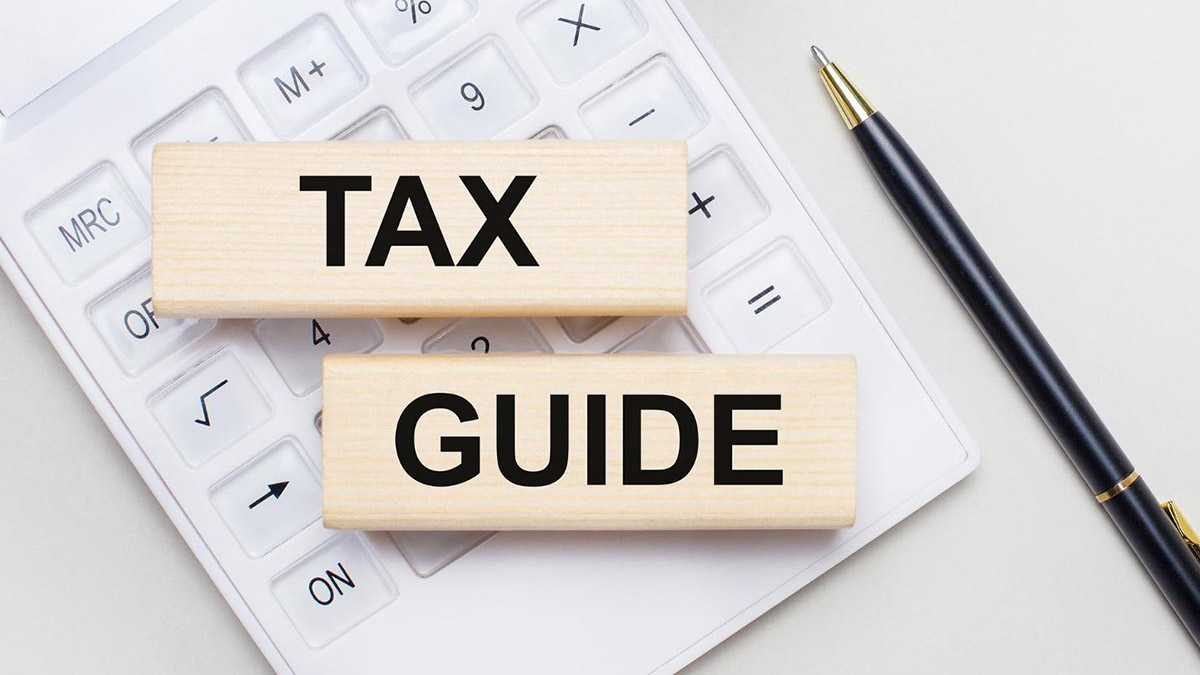

Finance
Where To Enter Margin Interest On A Tax Return
Published: October 28, 2023
Learn how to enter margin interest on your tax return and save on your finance costs. Find out the correct location for reporting this deduction and maximize your tax savings.
(Many of the links in this article redirect to a specific reviewed product. Your purchase of these products through affiliate links helps to generate commission for LiveWell, at no extra cost. Learn more)
Table of Contents
Introduction
Welcome to our comprehensive guide on where to enter margin interest on a tax return. When it comes to managing personal finances and investments, understanding the tax implications is crucial. Margin interest refers to the interest paid on borrowed funds used to buy securities in a margin account. Margin accounts are commonly used by investors to leverage their investments and potentially increase their returns.
While margin investing can be a powerful tool, it’s important to be aware of the tax considerations associated with it. One of the potential benefits of margin interest is that it may be tax-deductible, meaning you can claim it as an expense to reduce your taxable income. However, determining where to enter this deduction on your tax return can be confusing.
In this guide, we will explain the concept of margin interest, discuss the different places you can enter it on your tax return, and provide some tips to ensure you maximize your deduction. Whether you’re an individual investor, a sole proprietor, or a business entity, understanding how to properly account for margin interest will help you navigate the tax landscape effectively.
It’s important to note that while we aim to provide valuable information and guidelines, the tax laws and regulations are subject to change. It’s always a good idea to consult with a qualified tax professional or refer to the Internal Revenue Service (IRS) for the most up-to-date and accurate information regarding margin interest deductions.
Now, let’s dive into the world of margin interest and explore where to enter it on your tax return!
Understanding Margin Interest
Before we discuss where to enter margin interest on a tax return, let’s first understand what margin interest is and how it works. Margin interest is the interest charged by a brokerage firm for borrowing funds to invest in securities using a margin account.
A margin account allows investors to borrow money from the brokerage firm, using their existing securities as collateral. This borrowed money can then be used to purchase additional securities or to leverage existing investments. The interest on the borrowed funds is what is referred to as margin interest.
The primary benefit of using margin investing is the potential to magnify profits. By using borrowed funds, investors can expand their buying power and take advantage of investment opportunities that they might not have been able to afford otherwise. However, it’s important to note that margin investing also carries increased risks, as losses can be magnified as well.
Now, let’s discuss the tax treatment of margin interest. In some cases, margin interest may be tax-deductible, meaning it can be claimed as an expense on your tax return. The deductibility of margin interest is subject to certain conditions and limitations, which we will address in more detail later in this guide.
It’s important to differentiate between margin interest and other types of investment-related expenses. Margin interest specifically refers to the interest paid on borrowed funds used for investment purposes. Other investment expenses, such as brokerage fees, advisor fees, or custodial fees, are treated differently and may not be deductible in the same way as margin interest.
Now that we have a basic understanding of margin interest and its tax implications, let’s move on to discussing the specific places where you can enter it on your tax return.
Where to Enter Margin Interest on a Tax Return
When it comes to entering margin interest on your tax return, the specific location will depend on your tax filing status and the nature of your income. Here are the key forms and schedules where you may need to report margin interest:
- Form 1040, Schedule A: Itemized Deductions: If you’re an individual taxpayer who itemizes deductions instead of taking the standard deduction, you can claim margin interest as part of your overall itemized deductions. Margin interest falls under the category of “Investment Interest Expense” on Schedule A. By itemizing deductions, you may be able to reduce your taxable income and potentially lower your tax liability.
- Form 4952: Investment Interest Expense Deduction: If you’re an individual investor or business owner and you intend to claim a deduction for investment interest expense that exceeds your net investment income, you’ll need to file Form 4952. This form calculates the deductible investment interest expense and determines any carryover amounts for future years.
- Form 1040, Schedule C: Business Income: If you’re a sole proprietor and you use a margin account for your business activities, you may be able to deduct margin interest as a business expense on Schedule C. This applies if your business activities involve investments or trading activities that generate taxable income.
- Form 1065: Partnership Return: If you’re a partner in a partnership, and the partnership uses a margin account for its investment activities, the margin interest can be deducted as a partnership expense on Form 1065. The deductible margin interest is allocated to each partner according to their share in the partnership’s profits and losses.
- Form 1120: Corporation Income Tax Return: If you operate a corporation and the corporation uses a margin account for its investment activities, the margin interest can be deductible as a business expense on Form 1120. The corporation can claim the margin interest deduction as part of its overall business expenses, which helps reduce its taxable income.
It’s important to consult the specific instructions for each form or schedule when entering margin interest deductions, as the requirements and reporting methods may vary slightly. Additionally, make sure to keep accurate records of your margin interest expenses, including statements from your brokerage firm or lender, in case of any audits or inquiries from the IRS.
Now that we’ve covered the various locations for reporting margin interest on your tax return, let’s explore some tips for effectively claiming the deduction.
Tips for Claiming Margin Interest as a Deduction
When claiming margin interest as a deduction on your tax return, it’s important to follow the guidelines and requirements set by the IRS. Here are some tips to help you effectively claim the margin interest deduction:
- Keep Detailed Records: Maintain accurate and organized records of your margin interest expenses, including statements from your brokerage firm or lender. This documentation is crucial to substantiate your deduction in case of an IRS audit or inquiry.
- Distinguish Personal and Business Use: If you have a margin account that is used for both personal and business purposes, be sure to allocate the margin interest deduction accordingly. Only the portion of the margin interest related to business activities can be claimed as a business expense.
- Consider the Net Investment Income Tax: The investment interest expense deduction is subject to the Net Investment Income Tax (NIIT) for high-income individuals. Be aware of the NIIT threshold and how it may affect your deduction. Consult with a tax professional to determine your eligibility for the deduction and the potential impact of the NIIT.
- Understand Passive Activity Rules: If you’re claiming the margin interest deduction as an investor in a passive activity, such as rental real estate or limited partnerships, ensure that you comply with the passive activity loss rules. These rules may limit your ability to deduct investment interest against passive activity income.
- Consider the Alternative Minimum Tax (AMT): The deduction for margin interest may be limited or disallowed under the AMT calculation. If you’re subject to the AMT, work with a tax professional to determine the impact on your margin interest deduction.
- Seek Professional Advice: Tax regulations can be complex, especially when it comes to investment-related deductions. Consulting with a tax professional who specializes in investment tax matters can help ensure that you navigate the rules correctly and optimize your margin interest deduction.
Remember, the specific requirements and limitations for claiming the margin interest deduction can vary based on your tax filing status, the form you use, and your individual circumstances. It’s always recommended to consult with a qualified tax professional or refer to the IRS guidelines for accurate and up-to-date information.
With these tips in mind, you can confidently claim the margin interest deduction and potentially reduce your taxable income.
Potential Limitations and Considerations
While claiming a margin interest deduction can be beneficial, it’s essential to be aware of certain limitations and considerations. Here are some key factors to keep in mind:
- Investment Income Requirement: In order to deduct margin interest, you need to have investment income to offset the deduction. The deduction is generally limited to the amount of your net investment income for the tax year. If your investment interest expense exceeds your investment income, the excess can be carried forward to future years.
- Qualified Investment Interest: The deduction is applicable only to investment interest, which includes interest paid on funds used for investments in stocks, bonds, mutual funds, and other eligible securities. Interest on loans used for personal expenses or non-investment purposes is not eligible for the deduction.
- Alternative Minimum Tax (AMT): The deduction for margin interest may be limited or completely disallowed under the AMT calculation. The AMT is a separate tax system with its own set of rules and rates. If you’re subject to AMT, consult with a tax professional to determine the impact on your margin interest deduction.
- Passive Activity Loss Limitations: If you’re claiming the margin interest deduction for investments in passive activities, such as rental properties or limited partnerships, the deduction may be subject to passive activity loss rules. These rules can limit the ability to deduct investment interest against passive activity income. It’s important to understand these rules and consult with a tax professional to properly navigate them.
- Net Investment Income Tax (NIIT): The investment interest expense deduction may be subject to the Net Investment Income Tax (NIIT) imposed by the Affordable Care Act. The NIIT applies to certain high-income individuals and is an additional tax of 3.8% on net investment income. Consider whether the NIIT applies to you and consult with a tax professional for guidance.
- State and Local Considerations: The deductibility of margin interest may vary at the state and local tax levels. Some states do not conform to the federal rules, and the availability and limitations of the deduction can differ. Review your state and local tax laws or consult with a tax professional to understand the specific requirements in your jurisdiction.
It’s essential to stay informed about current tax laws and regulations, as they can change over time. What may be deductible now could be subject to different rules in the future. Always consult with a qualified tax professional or refer to the IRS guidelines for the most up-to-date information regarding the deductibility of margin interest.
By understanding these potential limitations and considerations, you can accurately assess the impact of claiming the margin interest deduction and make informed decisions about your tax planning strategies.
Conclusion
Understanding where to enter margin interest on a tax return is crucial for maximizing deductions and reducing your taxable income. By properly accounting for margin interest, you can potentially lower your tax liability and optimize your overall financial position.
In this comprehensive guide, we explored the concept of margin interest and its tax implications. We discussed the various locations where you may need to report margin interest, such as Form 1040’s Schedule A for itemized deductions, Form 4952 for the investment interest expense deduction, and certain business-related tax forms depending on your circumstances.
We also provided valuable tips for claiming the margin interest deduction, including the importance of keeping detailed records, accurately allocating personal and business use, understanding the Net Investment Income Tax (NIIT), and considering the limitations imposed by the Alternative Minimum Tax (AMT) and passive activity rules.
It’s essential to consult with a qualified tax professional or refer to the latest IRS guidelines to ensure compliance with current tax laws and regulations. These guidelines may change over time, so staying informed is essential.
By following the advice and information provided in this guide, you can confidently navigate the complexities of reporting margin interest on your tax return and make the most of the available deductions.
Remember, tax matters require careful consideration and expert guidance. If you have any doubts or questions specific to your unique situation, it’s always wise to seek the advice of a qualified tax professional to ensure you maximize your deductions while remaining in compliance with the tax laws.
By effectively managing and accounting for margin interest deductions, you can contribute to your overall financial well-being and make the most of your investment activities while maintaining compliance with the tax code.














